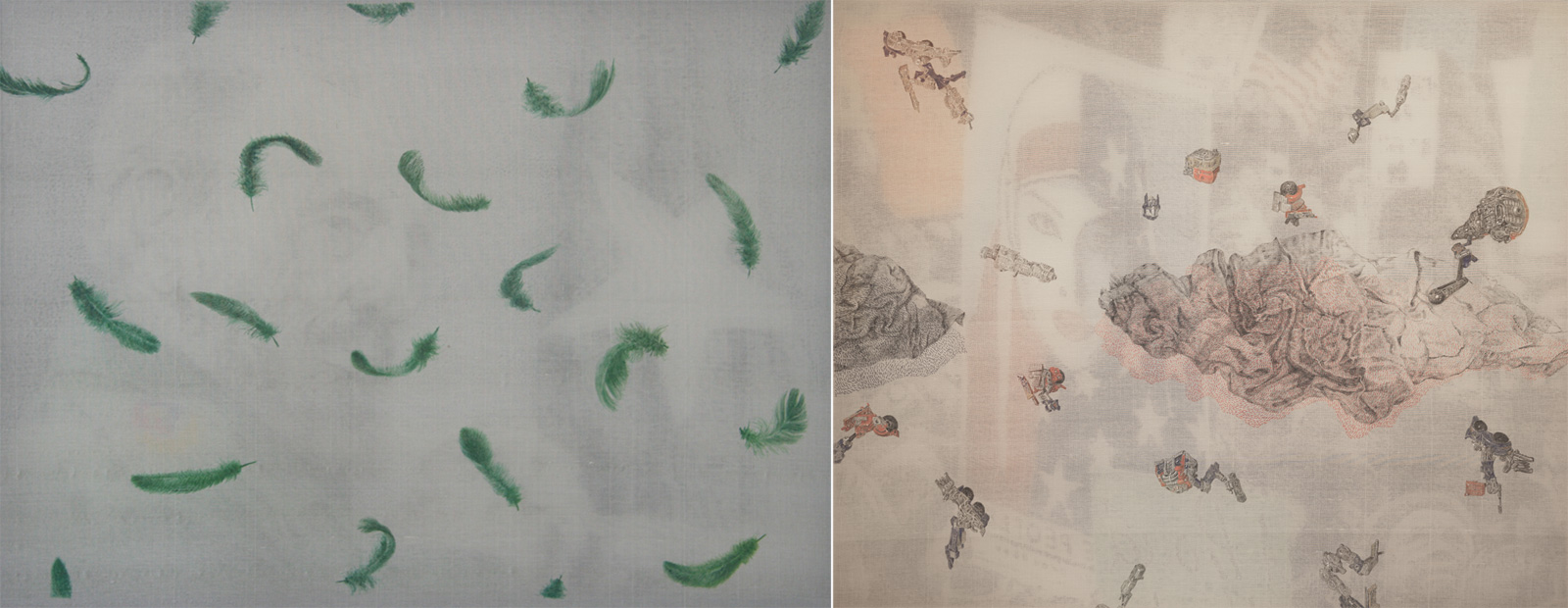Zhong Shan’s Surrealist “Free Fall” Exhibition
Beijing’s ArtDepot showcases the artist’s captivating oil-on-silk works

by Alessandro De Toni
The masters of surrealism left a strong mark on a whole generation of Chinese painters. Born in 1971, in the Southern province of Guizhou, Zhong Shan—like many artists of his generation—was inspired by surrealist masters, and a very eclectic sense of experimentation pushed him to explore different languages and address the juxtaposition of imagery through his art. “In my work, there’s a constant overlap of images from the outer world and random details from my daily life: the space between leaves the viewer a chance to interpret my artworks in their very own way, and the process gives me a new awareness on what I thought to be random free association,” he explains.

More than just theory, the practice of his work is based on the idea of double, arguably unrelated images. His canvas of choice is silk and the paint is oil. During his process, a sheet of silk is painted on both sides with different, contrasting subjects. “In the fusion of the traditionally Western media of oil—with silk, whose history is rooted in Chinese civilization—I found my ideal language. Moreover, I feel that the illusory nature of my compositions and their underlying sense of uncertainty is somewhat closer to the ‘Chinese way,’ leaning toward a multilayered complexity more than seeking straightforwardness,” Shan continues.
His silk canvases don’t allow him to make any mistakes (typical corrections possible with oil can’t be performed on silk easily), shifting oil painting closer to Chinese traditional watercolor work, in this instance, where simple calibrated gestures paint a definitive structure of ink against emptiness.

Each piece is mounted on a backlit frame as a rhythmic blinking light makes one layer appear and then disappear. Each artwork is named with a date: the day President Trump took office, the day AI Sophia was unveiled to the public, or the day Kim Jong-un celebrated a new nuclear head. “In Beijing, or anywhere you are, you’re constantly exposed to the events of a global world. I personally watch the news closely and paint images which have become icons of time throughout social media. On the opposite layer, I juxtapose them with objects I encounter my daily life,” he says.

Zhong Shan’s son’s robot toys float on Trump’s Muslim travel ban announcement, green feathers fall on the portrait of Castro, broken bottles frame a group of local police conducting mass evictions in the capital. These stunning, dreamlike paintings push the viewer to interpret the assonance between distant images, to explore the boundaries between inner reality and outer world, to wander in the floating space of imagination.
Zhong Shan’s solo exhibition opens 26 April at Beijing’s ArtDepot and runs through 20 May.
Images courtesy of the Zhong Shan












